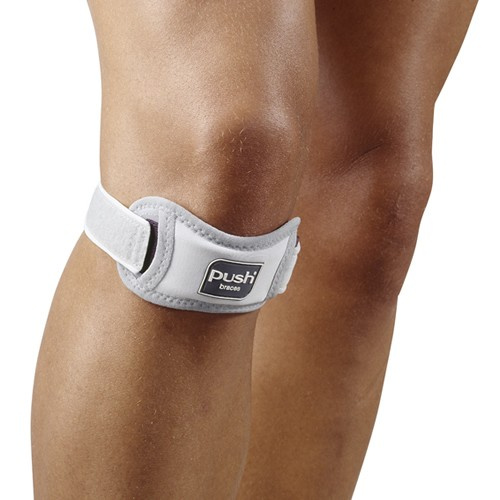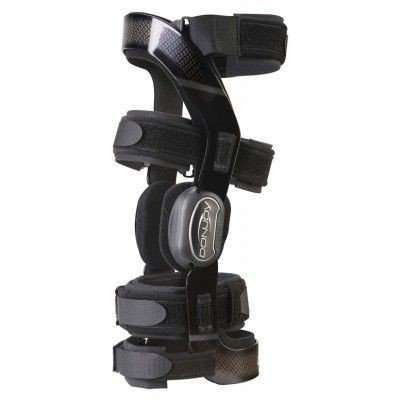Do knee braces help with running?

Knee support braces are medical devices that provide support and help to stabilize the knee joint - but can they actually be used to help runners? In order to answer this question, it is important to understand the benefits of these orthoses. Knee supports and braces serve two pain purposes - to help the wearer recover from knee-related injuries, and to be worn prophylactically. They are ideal for people who are recovering from patellar surgery, suffer from an injury to the leg, are elderly and or prone to knee joint instability, or simply want to get rid of knee pain. However, prior to purchasing your own knee brace, it’s crucial that you consult with a medical professional in order to assess whether or not this type of product will prove to be beneficial for you. So, how do these braces help runners during both of these instances?
Prophylactic wearing
Prophylactic knee braces and supports are ideal for elderly people who suffer from conditions, such as arthritis in the knees, as well athletes who experience joint stability issues or simply wish to prevent them in the first place. Unlike knee supports for treating injuries, those designed for prophylactic use do not limit the wearer’s ability to perform physical activities, such as walking or running (Emily Shiffer). In fact, they’re made specifically for this! These are most commonly worn by athletes in direct contact sports, such as football and soccer, where there is constant physical contact with other players, which can result in any number of injuries, like damage to the patellar tendon or a dislocation of the kneecap. But with a reliable knee sleeve, you significantly reduce the possibility of that from occurring.
The typical models come in the form of open patella knee straps, or a simple knee sleeve, which allows for a wide range of motion while keeping pressure on and around the kneecap, in order to prevent dislocations and knee pain. They are made of constricting, yet comfortable materials that prevent the buildup of sweat and are comfortable to wear for long periods of time. More advanced models on the other hand, come with hinges and side rails that not only offer added support, but also prevent knee pain and injury to the cruciate ligament, also known as an ACL tear. When playing high-intensity sports, protecting this ligament is essential, as it connects your femur to the tibia, allowing for proper movement of the knee joint.
For treating injuries
If you’ve experienced an ACL tear, runner’s knee, patellar tendonitis, or any other knee injury and are looking for pain relief, a knee brace is the ideal solution. For most of these less-severe injuries, your doctor or physical therapist might recommend resting, rehabilitative exercises, icing the affected area, avoiding standing on the affected leg, keeping it raised and making use of a knee orthosis to shift your body’s weight off of your leg. However, it all depends on the severity of the injury. If you’ve experienced a complete ACL tear, chances are you’ll most likely be recommended surgery to replace the damaged ligament (Mayo clinic staff). While you’re recovering, you’ll probably be instructed to wear a knee stabilizer that immobilizes the joint in order for it to help properly.
Just like for prophylactic wearing, most these devices compress the area around the knee, keep the joint stabilized and are weight bearing in order to prevent further injury. However, there are a few knee brace variants that are suited to different situations. For example, a knee immobilization support covers much of the leg and prevents the wearer from bending the knee joint. This type of orthosis is mainly used by patients recovering from posterior cruciate ligament injuries, PCL surgery or instability at the ligament. This variant is made of soft, cushioning materials with lateral and posterior stabilization rods, making it comfortable to wear and easy to wash.
On the other hand, people who have experienced ACL tears and have undergone ACL replacement surgery require a different knee support. ACL knee braces are often made with roll-and-glide hinge technology that doesn’t impede on movement and comes equipped with an extension stop kit, in order to prevent the knee from bending in unnatural positions. As for materials, they’re made of a high-quality frame that is suited for regular joint movement, as well as an anti-migration strap padding and cushions, to prevent skin irritation. Although certain knee supports intended on treating injuries can be worn when running, medical specialists do not recommend people who haven’t fully recovered from their injuries to do so.
Yes, knee supports can help athletes with running - prophylactic braces are made for the job! As for post injury and post surgery braces, they’re intended to help get your legs back into working order and get you back on track, but aren’t specifically knee braces for running. Whichever braces you’re on the lookout for, you’ll definitely find them in our store. With over 100 different knee brace variants to choose from, you can be certain to find the right one for you. But before you make a purchase, consult with a medical specialist and ask if this type of product is right for you. If they see it as a beneficial treatment option, ask that they take your leg measurements in order to help you choose the right sized knee support.
Sources:
- “ACL injury” Mayo clinic staff, March 30, 2019 https://www.mayoclinic.org/diseases-conditions/acl-injury/symptoms-causes/syc-20350738#:~:text=An%20ACL%20injury%20is%20a,basketball%2C%20football%20and%20downhill%20skiing.
- “Can Running With a Knee Brace Help With Your Pain?”, Emily Shiffer June 3, 2020 https://www.runnersworld.com/health-injuries/a32731147/knee-brace-for-running/


